Has your thyroid taken away your hair?
If so, you aren’t alone.
Thyroid hair loss is one of the most concerning symptoms that thyroid patients experience.
Hair loss can cause significant distress both emotionally and physiologically, and it’s never a normal or good sign.
Here’s the good news though:
It can almost always be addressed, treated, or managed.
You may not be able to 100% solve your hair loss but you should be able to see significant improvement in your hair quality, texture, and density by using certain therapies.
Today, I’m going to talk to you about hair loss treatments that thyroid patients can use to regrow their hair.
Before we jump in, I need to mention one very important point:
These treatments are considered more advanced and should be done in addition to (or after) treating the 3 most common causes of hair loss in thyroid patients.
These include:
- Ensuring that you have normal iron levels (by checking your ferritin) – Iron is essential (1) for hair growth production and thyroid patients are at increased risk for iron deficiency.
- Ensuring your thyroid medication is optimized – If your thyroid medication is too high or too low then you will not be able to regrow your hair. Always optimize your thyroid medication!
- Ensuring you’ve tried basic nutrient replacement and supplements – Replacing basic nutrients such as iron, zinc, selenium, B12, choline, and silica, are all required for optimal hair growth. Ensure that you have adequate levels of these nutrients before proceeding.
I consider these 3 causes to be the base or root cause of hair loss in many thyroid patients and by addressing these issues many of you should see improvement in your hair.
If you’ve already done this, or if you just want to be as aggressive as possible in regrowing your hair, then keep on reading because we are going to talk about additional treatments that can and do work.
Today you will learn:
- How to take advantage of some cosmetic dermatology procedures that can help regrow your hair
- The different types of hair loss that thyroid patients experience and how they present
- How and why lasers can help improve both thyroid function and hair regrowth
- Off-label medications (both topical and oral) that can be used to improve your hair
- And how adding caffeine to your shampoo may work as well as Rogaine
Let’s jump in…
#1. Microneedling
First on the list is microneedling (3).
Microneedling is a very interesting therapy that is predominately used in cosmetic dermatology offices for the purposes of anti-aging.
Microneedling was originally created to help tighten the skin, reduce acne scarring, and improve skin collagen.
It works like this:
When you undergo the microneedling procedure, your doctor will use what is called a microneedling pen.
This pen contains a number of very fine and very sharp needles (anywhere from 12 to 36 needles) in a replaceable cartridge.
The needles in the cartridge protrude slightly from the surface of the pen so that when it is placed on the skin it penetrates the skin to the desired depth.
The pen then vibrates the needle thousands of times and the pen is slowly dragged over the skin of the face resulting in thousands of pinpoint needle injections into your skin.
It sounds bad when you describe it but it’s actually not that intense of a procedure.
The thousands of microscopic pinpoint holes poked into the superficial layers of your skin result in the recruitment of healing cells to the surface.
These healing cells bring growth factors that stimulate the production of collagen and the healing process which result in skin tightening.
Why does this matter for hair loss?
Because it turns out that we can take advantage of this healing process and the growth factors that come with the damage from the pen if they are used in the right areas.
More recently, microneedling has been used to stimulate and induce hair growth if the needles are dragged along locations of hair loss.
For most people, this is on bald spots (alopecia areata) or in areas where you find your hairline receding (the crown of the head and the temple area).
When you use microneedling on areas of your head where your hair isn’t growing you can stimulate hair growth by recruiting those same growth factors that help your skin get tighter.
This results in more blood flow and nutrients that pour into the hair follicle to stimulate hair follicle metabolism.
Microneedling is a fairly inexpensive therapy that usually costs around $100 to $200 per session.
You can also purchase the pen yourself from places like Amazon and then do it yourself if you feel so inclined.
I would recommend getting this done professionally first, though, so you can see if it works and how it’s done before you take that plunge.
Before you make an appointment for microneedling be sure to call ahead and ask if the person doing the microneedling is familiar with using it for hair regrowth.
Microneedling is not a new treatment but using it for hair regrowth is somewhat new so you may need to call around to find someone who is willing to do it.
You can often find aestheticians who do this therapy as well if you want to skip out on the cosmetic dermatology office.
#2. Platelet-rich plasma (PRP)
Platelet-rich plasma, or PRP for short, really piggybacks off of #1 because these therapies can be combined for enhanced benefit.
PRP is sometimes referred to as the “vampire” treatment because it involves using your own blood in a special way.
This treatment is also frequently used at cosmetic dermatology offices for anti-aging purposes because it provides similar benefits (4) to that of microneedling on the skin.
PRP injections aren’t just relegated to improving your skin, though, they are also used to promote healing and provide benefits to many different areas of the body including joints, ligaments, muscles, and tendons (5).
High-level athletes will often take advantage of this treatment to rapidly repair injuries so that they can get back to playing their sport or get back to competing.
It just so happens that those suffering from hair loss may also be able to take advantage of this treatment.
It works like this:
When you come into the office you will have your blood drawn from your arm.
That whole blood will then be spun down in a centrifuge will help separate your blood based on density.
One of the layers formed is plasma which is rich in a special kind of cell known as platelets.
Platelets normally help your body initiate blood clots but they also contain with them special healing and growth factors.
Your doctor will then extract out just the platelet-rich plasma (PRP) and inject it into the area that you want to promote healing.
This is why it’s commonly used with microneedling.
You’re already creating microscopic pinpoint holes in the skin with the microneedling procedure so you can follow it up by placing the PRP on top of your skin so it can seep into those holes to promote healing.

If you are using PRP for hair loss you have the option to either combine it with microneedling or simply obtain the PRP from your blood and then inject it into the areas where you are losing hair.
Both methods can work!
If you’d like to try PRP then you will want to seek out a cosmetic dermatology office or someone else who specializes in such a treatment.
Prices for PRP can vary and they tend to be more expensive than microneedling because the process is a little bit more involved.
PRP is ideal for hair loss, though, because it allows you to take advantage of the healing properties already found inside of your own body and doesn’t require the need for additional medications that may alter or change your physiology.
#3. Low-Level Light Therapy (Red Laser & LED Therapy)
Next on the list is low-level light therapy or laser therapy.
I’ve discussed the benefits of using red laser therapy and its healing benefits in the setting of Hashimoto’s thyroiditis here.
Today we are talking about the same (or similar) therapy but in the setting of treating hair loss.
It is well known that certain frequencies and wavelengths of light may have healing properties (6) when targeted on the body.
Lasers are used in medicine for all sorts of purposes including treating scar tissue, in dentistry, for tumor removals, for anti-aging purposes, and much more (7).
I only bring this up to suggest that using lasers to treat problems in the body is not something new, nor is it something you should be afraid of.
Low-level laser therapy is a very safe form of therapy and is often considered to be safe enough that you are able to purchase devices that produce this wavelength over the counter.
More powerful lasers, especially those that can cause permanent injury, are only available to medical professionals.
One big downside to using laser therapy is that it’s hard to get the lasers deep enough into the body to impact certain organs or tissues.
Lasers can only penetrate the superficial layers of the skin which means they don’t get deep enough to impact organs that are buried beneath muscles, tissues, or fascia.
But we don’t need to worry about this problem when treating the thyroid or your hair!
Why?
Because your thyroid gland is very superficial (it’s found very close to the skin in your neck) and the same is true for your hair follicles.
Because of this, laser therapy is often very effective at improving hair loss and many devices have been created for such purposes.
If you are looking to take advantage of low-level laser therapy for hair regrowth then you will want to look for lasers in the 600 to 800 nm wavelength.
These tend to be the safest, they provide sufficient penetration to impact your hair follicles, and they also have the added benefit that you may be able to also use them on your thyroid gland.
In this way, you can get a two-for-one by treating both your hair AND your thyroid gland (obviously, not at the same time!).
There are many FDA-approved low-level light devices that you can purchase over the counter.
These devices come as laser guns or as caps that you place over your head and usually range in price anywhere from a couple of hundred dollars up to one thousand dollars (depending on the quality of the laser).
You can see an example of such a device here from Costco which provides medical-grade lasers at 680 nm (the wavelength you want) that comes built into a cap.
This particular device is FDA-approved (8) to treat androgenetic alopecia in men and women but it may also help other forms of hair loss that thyroid patients suffer from.
Lasers are felt to work by improving and stimulating blood flow to the scalp which then brings with it more nutrients that your hair follicles can then use to grow.
While laser therapy can and does work for many people, I find that combining it with other therapies provides a better benefit than just using it by itself.
#4. Spironolactone
Spironolactone is a prescription medication that was originally designed to treat high blood pressure (9).
Even though it is not FDA-approved to treat hair loss you will find that many cosmetic dermatology offices prescribe it to treat both hair loss and hormone-related acne (10) (for which it is quite effective).
It works primarily as an aldosterone receptor antagonist which is why it impacts blood pressure but it also helps improve hair loss through two important mechanisms:
#1. By decreasing testosterone production in the adrenal gland by interfering with the 17a-hydroxylase enzyme.
And #2. By blocking testosterone and androgen receptors on certain tissues.
Let me put this into context so it makes sense.
One of the most common causes of hair loss among thyroid patients (and women in general) is excess testosterone activity on hair follicles.
This type of hair loss is known as androgenetic alopecia.
This hair loss is frequently seen in women with PCOS and thyroid problems as they both result in dysregulation of testosterone.
Excess testosterone receptor stimulation is responsible for hormonal acne as well as male-pattern baldness in women!
Spironolactone works because even if that excess testosterone is floating around in your body, it won’t allow as much of it to bind to and impact your hair follicles.
It also can cause some immediate reduction in testosterone production from your adrenal glands as well.
Spironolactone is not my favorite medication to use for hair loss but it can be very effective in the right setting.
If you are someone who is struggling with hair loss and you know that you are dealing with high testosterone levels either because you have a history of PCOS or because you’ve tested your testosterone levels, then spironolactone is probably worth a shot.
It’s different from the other therapies we’ve discussed so far because it is a prescription medication and, for the most part, it only masks your hair loss.
It also carries with it some minimal risks including issues with potassium levels and problems with low blood pressure.
These side effects are usually minimal but they should always be considered.
Spironolactone is a prescription medication which means that you will need to get it from your doctor.
I’ve found that most doctors are willing to prescribe it, though, so it should be fairly easy to get (especially when compared to thyroid medications such as T3 or NDT).
#5. Minoxidil
Minoxidil, known as Rogaine, is one of the more popular therapies for treating hair loss but one that I frequently recommend.
The mechanism by which it works is unknown but, despite this, we do know that it works to help with hair regrowth.
Minoxidil is FDA-approved for hair loss in both men and women (11) and has been shown to work for both genders.
The problem is not that it doesn’t work but that when it does work it simply masks your hair loss problem.
Using it may slow down your hair loss and even promote some hair growth but once you stop taking it, you will revert back to wherever you were when you started.
In this way, it doesn’t actually treat or reverse the root cause of hair loss in thyroid patients.
Having said that, it does have a place in the treatment of hair loss for thyroid patients.
If you are someone who is suffering significant psychological distress because of your hair loss then using minoxidil, even temporarily, may be a good way to reduce your stress and allow time for other treatments to work or kick in.
If you use it in this way then you can always stop taking it down the road once you have addressed the root cause whether that be from inflammation, thyroid function, testosterone problems, or autoimmune disease.
The good news about minoxidil is that it is readily available over the counter and in generic form.
You can even purchase it directly from Amazon if you don’t want to physically go to a box store to get it.
It comes in liquid or a foam solution and both types can work.
The foam is more expensive but may be slightly better if you have sensitive skin.
#6. Caffeinated Shampoo
If you are thinking about using minoxidil then I would highly recommend that you also take a look at caffeinated shampoos as well.
Caffeinated shampoos have been shown to work as well as minoxidil in some studies (12) which means they can be quite effective.
Caffeinated shampoo is exactly what you would expect:
Shampoo that contains the added ingredient of caffeine.
It turns out that caffeine can easily be absorbed through the superficial layers of the skin in your scalp which can then impact your hair follicles.
How caffeine works to promote hair growth is not well understood but we know that it stimulates hair follicles while simultaneously protecting the hair follicles from testosterone.
I recommend caffeinated shampoos for several reasons:
#1. Most people already have a pretty good idea of how they tolerate caffeine because they are ingesting it on a daily basis in the form of soda or caffeine. This means you usually don’t have to worry about side effects.
#2. Caffeinated shampoos are cheap and easy to get. You can get them off of amazon relatively easily.
#3. You’re already using shampoo on a frequent basis anyway so all you need to do is substitute out your current shampoo for a caffeinated version and you are good to go! This means you don’t have to worry about changing up your schedule much at all.
#4. And lastly, you can sometimes find caffeinated shampoos which have additional nutrients and vitamins that your hair follicles may also benefit from such as zinc and niacin.
If you are having issues with hair growth then switching to a caffeinated shampoo may be one of the easiest first steps to take.
#7. Finasteride
I’m including this last one for completeness sake but I typically do not recommend using it.
Finasteride is another prescription medication that can be used to treat hair loss and it works by blocking the conversion of testosterone to a more powerful version called DHT or dihydrotestosterone.
DHT is implicated as the cause of hair loss in men and women with androgenetic alopecia which is why using this medication can work.
It works in a similar but more powerful way compared to spironolactone.
Spironolactone helps to block the activity of testosterone and finasteride helps to block the conversion of testosterone to DHT.
The only problem with finasteride is that it can come with a long list of side effects that range from mild to pretty serious.
In men, for instance, it can result in post-finasteride syndrome (PFS) which consists of persistent or irreversible sexual, neurological, physical, and mental side effects (13).
While this syndrome has been noted predominately in men, it appears plausible and likely that women may be at risk for it as well.
Using finasteride doesn’t guarantee that you will get this syndrome, of course, but I would be very cautious about using any therapy that carries with it the potential for serious and long-term (if not permanent) side effects especially when there are so many other options available.
I’ve included it here for completeness though I would strongly recommend that you explore other options before trying out finasteride.
These side effects seem to predominately appear in those people who use the oral version of this medication.
Newer topical versions show promise in improving hair growth while simultaneously decreasing the risk for serious side effects but more time is needed to see how people respond to them.
Before you use finasteride (topical or oral) make sure you research the list of potential side effects and consequences.
Final Thoughts
There you have it!
This list contains MORE treatments that thyroid patients can use to both stop hair loss and help regrow their hair.
All 7 of these therapies and treatments can be used on top of the recommended treatments that you should be doing right now including optimizing your thyroid medication, taking certain hair regrowth nutrients, and ensuring your ferritin is in the ideal range.
Each of these treatments works in a slightly different way which means they can be stacked or layered on top of one another for even better results.
In my experience, using these treatments (as well as those listed in my other articles) you should be able to find a way to significantly improve the status, quality, and texture of your hair!
And now I want to hear from you:
Are you suffering from thyroid-related hair loss?
If so, what type of treatments or therapies have you used?
Have you used any of the therapies on this list? Is this the first time you’ve heard about them?
Are you planning on trying any of the treatments here?
Do you have any concerns about using them?
Leave your questions or comments below!
Scientific References
#1. https://www.ncbi.nlm.nih.gov/pmc/articles/PMC3678013/
#2. https://www.fda.gov/patients/learn-about-expanded-access-and-other-treatment-options/understanding-unapproved-use-approved-drugs-label
#3. https://www.ncbi.nlm.nih.gov/pmc/articles/PMC5556180/
#4. https://pubmed.ncbi.nlm.nih.gov/31280855/
#5. https://www.hss.edu/condition-list_prp-injections.asp
#6. https://www.sciencedaily.com/releases/2013/10/131022102227.htm
#7. https://www.fda.gov/radiation-emitting-products/surgical-and-therapeutic-products/medical-lasers
#8. https://www.accessdata.fda.gov/cdrh_docs/pdf18/K180460.pdf
#9. https://www.ahajournals.org/doi/full/10.1161/01.hyp.0000259805.18468.8c
#10. https://www.jaad.org/article/S0190-9622(20)30510-7/pdf
#11. https://pubmed.ncbi.nlm.nih.gov/25807073/
#12. https://www.karger.com/Article/Fulltext/481141
#13. https://pubmed.ncbi.nlm.nih.gov/32033719/
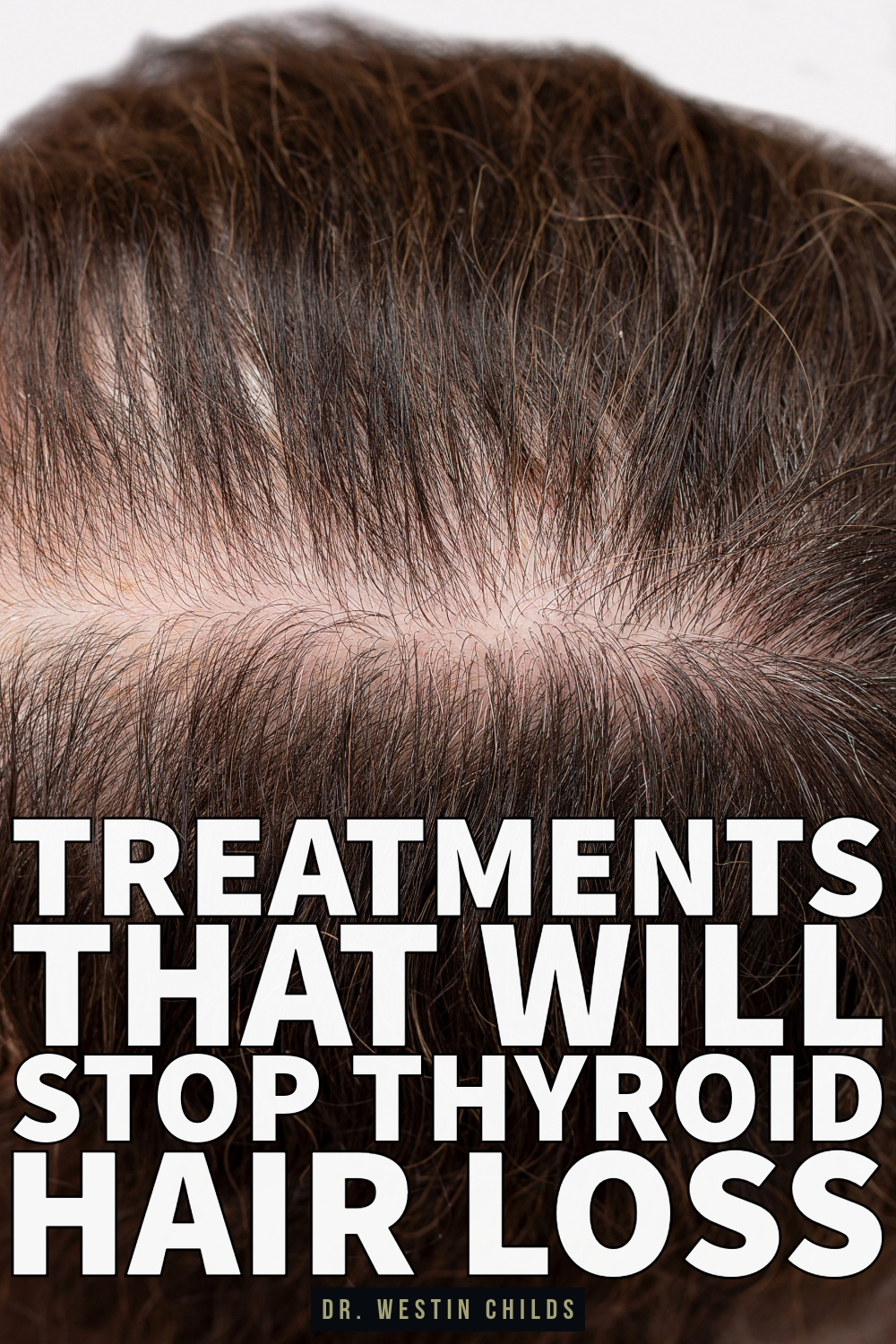
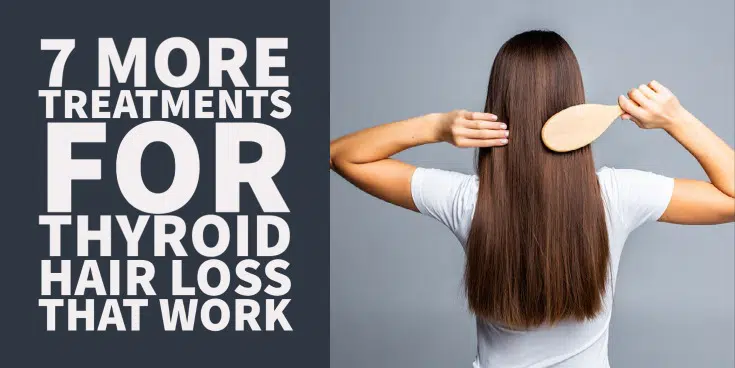

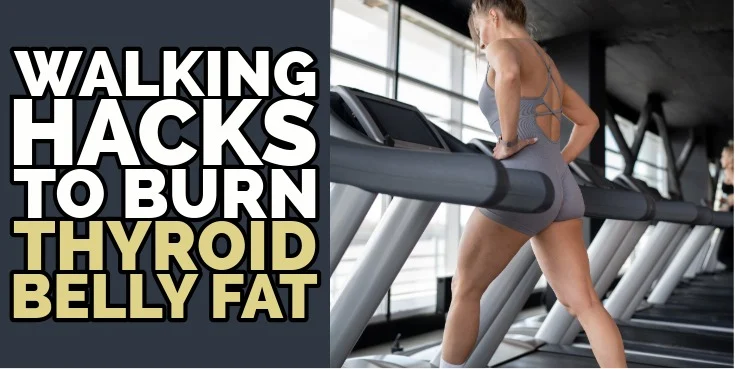

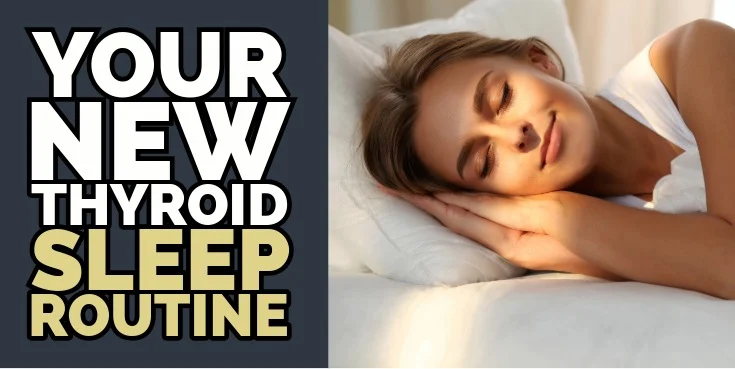

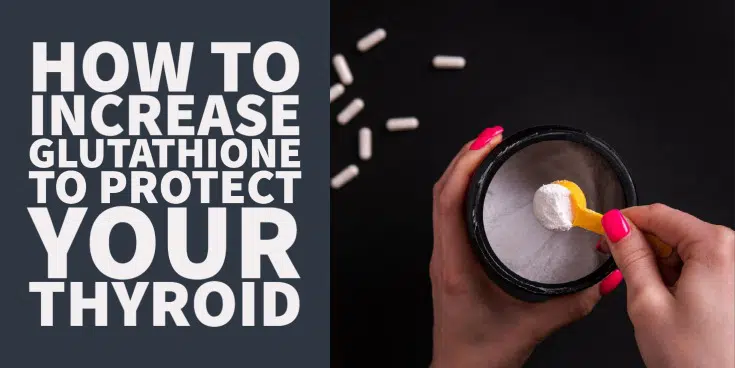


Hi Dr. Child’s,
Once you stop finastride. Do you loose the hair you gained.
Hi Liz,
Yes. Most medications provide only temporary relief from hair loss and are best if only used for a short duration of time while trying to find and address the root cause of hair loss. They are fine to use, especially if you are someone that is very self-conscious about your hair loss but they are not permanent solutions.
Hi Dr Childs:
Is there a way to use the Costco Theradome laser hair growth device for thyroid as well? It seems like it would be awkward, since it is a helmet shape, but maybe it could just be held over the thyroid? Do you have any further information on the therapeutic use of low-level laser therapy for thyroid health? What can the laser actually do – resolve thyroid nodules, lower TPO antibodies, etc?
Thanks so much.
Sasha
Hi Sasha,
I can’t speak to the effect of that laser on thyroid health as it wasn’t designed for that purpose but if you’d like to learn more about what wavelengths and which lasers work to improve thyroid function please see this article: https://www.restartmed.com/lllt-hashimotos/
Hi Sasha, I bought an infrared/near infrared mask and I use that on my thyroid, hair and face (might as well use it for anti-aging when I’ve got it!). The one I got was from Aduro and it has multiple functions. Wavelengths from 600 to eight hundred and something. My daughter can use it too for acne. It’s a fabulous piece of kit and I’ve seen great improvements with my thyroid (and my skin) since starting it. I’ve seen a slight improvement in my hair but I don’t know if it was due to the led or meds. They usually have a sale or some sort of offer but if not if you go to Claudia Glows on youtube and look up aduro 7-in-1 on her channel she has a really good discount code. I used hers. The mask I bought is much cheaper than the one linked above. I hope this helps and I wish you luck in your journey. Lots of love from Ireland.
Thank you so much for sharing this information about the Aduro facemask! A few questions – I see it is LED/red light therapy. Isn’t that different from low level laser therapy?
Is this the one you purchased – https://www.aduroled.com/product/aduro-led-face-mask/
Did you find it easy to use over your thyroid gland (even though it’s meant for the face)?
What positive results in your thyroid have you noted (eg – ability to decrease thyroid meds, decrease in TPO antibodies, etc)?
Thank you so much!
Sasha
I’ve started taking a DHT blocker by Nutrafol, along with their Balance product that I’ve taken for several years. How is a DHT blocker like this different from finastride? Does it have the same potential side effects? This DHT blocker has Saw Palmetto extract, Phytosterols, Stinging Nettle extract, Pumpkin Seed extract and African Cherry Tree extract.
Hi Roni,
Supplements just contain natural ingredients which encourage metabolism down a different route. DHT medications actually block the conversion process much more effectively and are much more powerful in that regard. Unfortunately, they come with negative side effects though as a result of that increased power. So if you can get by with supplements that’s always ideal.
For people who are sensitive to stimulants, I would not recommend caffeinated shampoo. I tried a caffeinated shampoo one time, not realizing that it contained caffeine. Though I washed my hair at 8:00AM,
I did not fall asleep that night until 7:00 the next morning. That was the only stimulant I had that day, so the shampoo had to be the culprit.
Hi Risa,
Good point! Not all of these therapies will work for everyone but they can at least be considered for most people.
I used PRP for my hip and it did not work. Not sure if it would help for my hair loss. My hair thinned substantially and I had balding spots in front of my head. I started taking liothyronine and that did help. Also made sure to take zinc, selenium, collagen and biotin and that also seems to help.
Hi Charlee,
Make sure to check for obvious causes of hair loss such as thyroid function as well!
How is hair loss related to bone pain? You’ll want to devote to bone pain with Thyroid
Hi Mickey,
They aren’t directly related but I suppose there are conditions that contribute to both (cancer might be one). But just because you have hair loss doesn’t mean you will have bone pain or vice versa.
Hi Dr chikds
I had full thyroidectimy in 2018 and to this day all if my number ers have not been even near normal. However i did get my hair back and is also long now but started loosing hand fulls if hair about 2 mo ago. My latest test results just a week ago..showed t3, t4 , free t4 in normal range but by thyroid uktrasensitive was in the lowest of the green, just a hair from the yellow. So what dies this mean.? My dictor shows no concern even though I tell him I feel nervous, jittery my heart races and flip flops, I have no energy and hair loss is back. Help please any advice would be greatly appreciated. I’m on levothyroxine 75 mg mon thru Wed Thurs thru Sunday 100 mg l and liothyroxine(T3) 0.5 mg twice daily.
Hi Cindy,
The best thing you can do is find a competent thyroid doctor that will listen to your symptoms and dose your medication based on a combination of your symptoms and free thyroid hormone lab tests. You can find out how to do that here: https://www.restartmed.com/normal-thyroid-levels/
Hi Dr. Westin,
Thanks for your great suggestions but I tried 3 expensive & painful PRP treatments that weren’t only useless, they caused more hair loss in the front of my scalp. I was later told it was “scalp shock” but the hair never thickened or grew back. Waste of money.
Hi Elena,
The difficult part about hair growth therapies (or any therapy in general) is that they don’t work for every person. What works for you may not work for someone else and vice versa. It’s unfortunate that it didn’t work for you but I’ve seen situations in which it has worked amazingly well for others. I’ve never seen it make someone lose more hair, though, which is definitely abnormal.
I bought a infrared/near infrared mask last year. I’ve been using it on my thyroid, hair and my face (because I need a boost there too!). I believe it had a huge impact on my thyroid and as a result the hair loss started slowing down too. Not sure if using the laser on the hair line itself helped much. I’d highly recommend the one I got as it’s a brilliant all rounder and cheaper than the one linked (or it was last year). It has a great range from 600nm to 800+ (can’t remember exact upper figure) and can be used for acne, anti-aging, pain relief, hyperpigmentation and cell rejuvenation so literally it’s a device for the whole family whether they have thyroid issues or not. And because it’s a mask it can be easily wrapped around the neck etc. I’m going to have to try some of the other methods mentioned as soon as I get the meds optimised. Thank you Dr. Childs for another great article.
Hi Emer,
The thyroid can respond to LLLT so I wouldn’t be surprised if that is also helping. If you use the laser therapy on your thyroid and it improves thyroid function then that may be enough to improve hair growth without putting the laser on your head. Thanks for sharing!
Hi I had Covid in December of 2021 spent 8 days in hospital and on oxygen for 2 months. In late March of this year I started losing hair when shampooing and combing in alarming amounts. I am not sure if it was from Covid or my thyroid/Hashimotos. After doing some research I started taking a Biotin supplement and using a collagen powder. Since I started that in early May my hair has stopped falling out and seems to be regenerating. Several nurses, hairdressers and others I have talked with said a lot of individuals who had Covid that was the number one complaint. I spoke to my Dr about problem and was told it was probably neither and that’s as far as it went, hence my research on my own.
Hi Diane,
An easy way to test if it is your thyroid would be to check your thyroid lab tests to assess thyroid function: https://www.restartmed.com/normal-thyroid-levels/
Hello
Can I use home-brewed coffee on my hair before shampoo instead of a caffeinated shampoo?
Hi Cecile,
I don’t know if brewed coffee will be absorbed through the skin. It may work but you’d want to do some research to see if caffeinated shampoo comes in a special carrier that improves absorption in the scalp.
Perhaps you should have included nettle, saw palmetto, rosemary and peppermint. I don’t like having to take prescription medications for problems I don’t have, furthermore it’s abusive to the human body and is a legal liability! I would suggest natural forms of medicine to deal with hairloss!
Hi Jessica,
This article is more for those who have tried other natural therapies which have failed. If you are first starting out then by all means give those ingredients a try. But there will be people who don’t respond to those who will have to be more aggressive. These therapies are for those people.
Hairloss, my entire body, but not my face 🙁
My hair on my head is brittle, I leave hair on everything. My drains, my rugs, my couch, my clothes, etc.
Nothing has worked.
I have sought solutions for yeast overgrowth. Treatment for my scalp and my insides. So far…..
Hi Connie,
Have you optimized your thyroid yet? That would be the first place to look: https://www.restartmed.com/normal-thyroid-levels/
I have both acne and frontal hair loss. My dermatologist recommended Minoxidil but when I tried it, I got some hair regrowth, but also started growing a peach fuzz beard. I also noticed that trapped hair and un-emerged acne below the surface of my skin became inflamed with stimulation of the hair follicles–so my acne got much worse. I never put any medication on any area other than the top of my head, but got this facial result regardless. Also tried full strength and less potent Minoxidil.
I’m writing this as a warning to others with both conditions.
Also tried Spirolonolactone but since it is a diuretic and I am an older woman, it had me peeing way too much! Now I have a compounded medication for my face but it is too thick to apply to my scalp.
Also tried red light therapy with a light bank that shown on both my face and hair. Unfortunately it made my acne scars, which are more prominent on one side of my face, contract and give my face an uneven appearance as the contractures pulled down that side. It probably would be excellent with someone with more normal skin as the tightening and lifting was like a mini-face lift.
Now my endocrinologist is giving me an evening cortisol test because I’m getting ‘fat’ in my mid-section. I have well controlled euthyroid Hashimotos and evidently my sublingual method of taking the levothyroxine is effective. Both my dermatologist and endocrinologist say that my androgen hormones are within the ‘normal’ range, so who knows why I have these hair and skin problems… Any insights?
Hi Nancy,
It’s hard to say for sure without more information because your other hormones could also be contributing. I think checking your cortisol is a good starting place and it should be obvious if that is contributing. High cortisol could lead to insulin resistance which could lead to androgen receptor sensitivity issues and so on.
What about the wheat in the caffeine shampoo? I’m entirely grain-free and it has improved my labs.
Hi Carol,
Do you mean the caffeinated shampoo has improved your thyroid labs? There are some that can tolerate wheat in shampoo and others who can’t, I wouldn’t worry too much if everything else seems to be improving for you while using it.
I have a Hairmax LLLT band for my hair, is that one that could be used on my thyroid gland as well? It has 82 medical grade lasers. 1230 mW power output
Hi Terri,
You’d need to check to see what wavelength it produces light at. You can learn more about using lasers for thyroid health here: https://www.restartmed.com/lllt-hashimotos/
Spirolactone can affect your thyroid levels in negative way, so how can people with thyroid disease take spirolactone??! It doesn’t make any sense to me.
Hi Neeta,
Great question! Just because something has the potential to negatively impact your thyroid doesn’t guarantee that it will. Potential side effects are just potential issues, but by no means always going to happen. In addition, sometimes the benefits outweigh any negative side effects, especially if those side effects are small. When you put all of this information together, sometimes it makes sense to use it, and sometimes it doesn’t. It really just depends on the situation.
Can having a tortuous colon cause your thyroid medication and vitamins and minerals to not be absorbed?